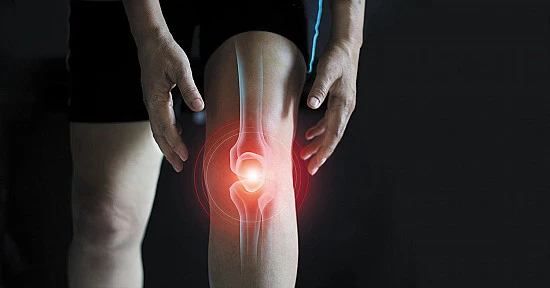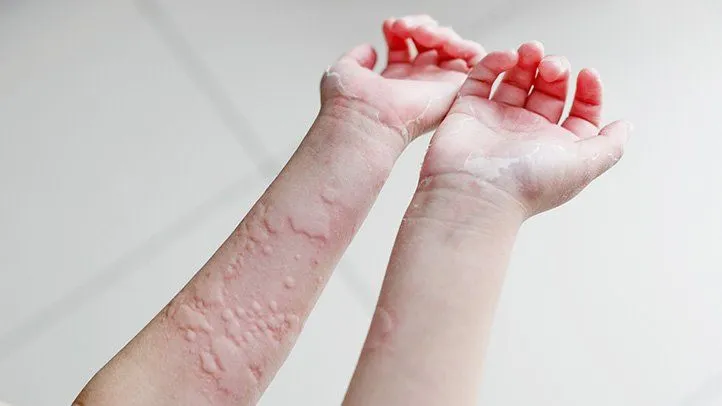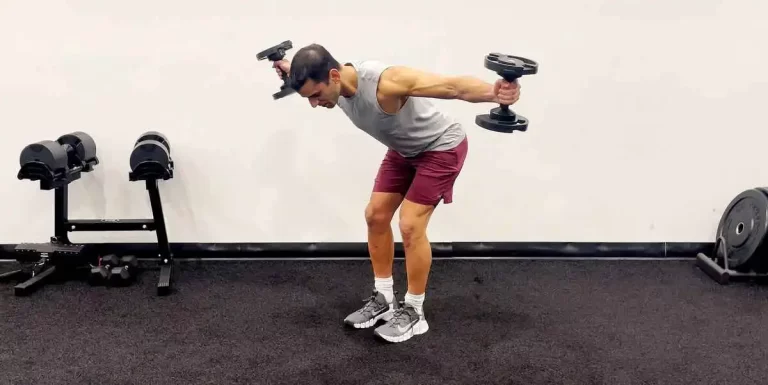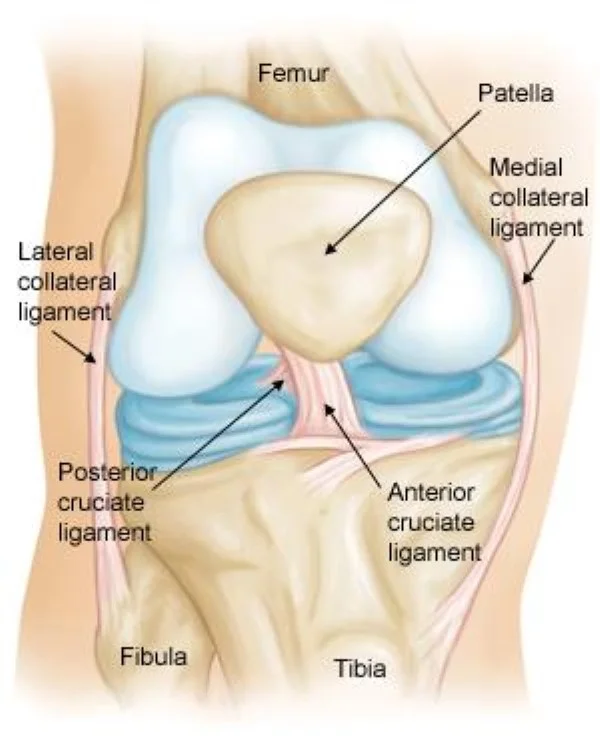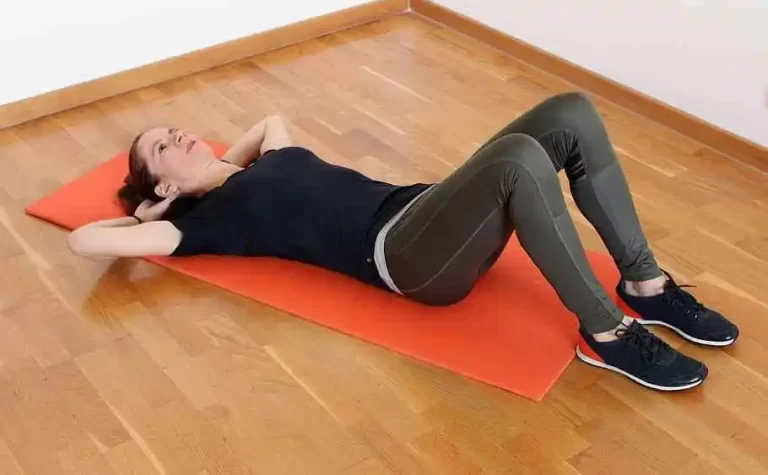How to Reduce Knee Pain: Effective Tips for Relief
Introduction
People of all ages can experience knee pain, which is a common problem that is frequently caused by accidents, excessive use, or underlying diseases like arthritis. Understanding how to manage and prevent knee pain is essential for maintaining mobility and quality of life. In this guide, we’ll explore effective tips to reduce knee pain and prevent it from recurring.
This type of arthritis is the most prevalent and is characterized by cartilage deterioration, which causes pain, stiffness, and decreased mobility. According to studies, knee pain affects up to 20% of adults and is a major contributor to many people’s impaired mobility and incapacity.
All ages can have knee pain, although some demographics are more susceptible than others. Due to the risk of possible injuries or overuse, athletes are more vulnerable, especially those participating in sports that involve running, jumping, or rapid rotation. Osteoarthritis is a degenerative joint condition that involves cartilage degradation, and it frequently causes knee pain in older persons. People with arthritis may experience knee pain at any age because the condition can affect any joint. Furthermore, knee pain can also be experienced by those who have infections or gout.
Brief Anatomy of the Knee
The following are its responsibilities:
Assisting in lowering and raising the body by keeping it upright without requiring the use of muscles
- Tibia.
- Femur.
- Patella.
While tendons are strong, fibrous threads that connect muscles to bones, cartilage serves as a protective coating and stress absorber at the extremities of the bones. Some of the ligaments in the knee restrict the range of motion of the tibia (shin bone), while others provide joint stability and protection.
Teenage knee pain is frequently caused by overuse, trauma, or age-specific conditions. Overuse injuries such as Osgood-Schlatter disease and patellofemoral pain syndrome (runner’s knee) are frequent causes. Inadequate training methods, muscular imbalances, and low flexibility are among additional variables that may be involved. Additionally, take into account weight management, over-the-counter pain medications, and mild workouts to increase mobility and strengthen the surrounding muscles.
Common Causes of Knee Pain
Overuse, arthritis, sprains and strains, and other medical conditions, including bursitis or infections, are common causes of knee pain. Specific conditions include rheumatoid arthritis, osteoarthritis, gout, and shattered bones, as well as ligament and cartilage injuries.
Among the more typical knee injuries are:
Knee bursitis. A result of certain knee injuries. Ligaments and tendons can freely move over the outside of the knee joint because of small fluid-filled sacs called bursae. On the other hand, unprotected standing for extended periods of time can cause injury. Bursitis can cause the knee to become stiff, painful, swollen, and heated. For a lot of patients, therapy and oral medications, like non-steroidal anti-inflammatory drugs (NSAIDs), may reduce the symptoms of bursitis. Splinting, rest, ice, and limb elevation are a few examples of therapy.
Patellar tendinitis. One or more tendons, which are thick, fibrous fibers that connect muscles to bones, become irritated and inflamed when someone has tendinitis. The tendon becomes inflamed and weakens over time as a result of the small tears caused by the knee’s repetitive stress.
Arthritis. When it comes to knee arthritis, osteoarthritis is the most prevalent kind. Middle-aged and elderly persons are frequently affected. Excessive strain on the joint, such as from ongoing injuries or being overweight, can result in osteoarthritis. People who have rheumatoid arthritis tend to be younger than those who have osteoarthritis.
- Mechanical problems
Poor posture or body mechanics: Improper body mechanics and bad posture can put uneven strain on the joints, which over time may cause wear and tear and result in knee pain. Repetitive motions and activities that put too much load on the knees without using the right form can cause pain and injury. Poor cushioning or support in shoes can make knee pain worse by altering shock absorption and alignment.
Iliotibial band syndrome. Runners and cyclists frequently suffer from iliotibial band syndrome, a common condition that causes pain on the outside of the knee.
Osgood-Schlatter Disease. Children who play sports, especially running and jumping sports, are more likely to develop this illness because physical activity overloads bones and muscles.
Hip or foot pain. To protect your troublesome joint, you could alter your gait if you experience foot or hip pain. However, your knee joint may experience more strain as a result of this changed stride, leading to knee pain.
Immediate Pain Relief Methods
The RICE technique for knee pain
- Rest: Stop the physical activity that was generating the pain to avoid making the injury worse. Any activity that may be making you feel awkward or sore should be stopped immediately.
- Ice: Cold will reduce pain and swelling.
- Compression: To help reduce swelling, cover the damaged or sore region with an Ace wrap or another type of flexible bandage. Reduce the bandage’s tightness if needed.
Over-the-counter drugs
The best painkiller for knee pain may differ from person to person. Still, several pharmacological alternatives are available to treat knee pain, including prescription medications, over-the-counter medications, and injections. For mild to severe pain, there are many over-the-counter NSAIDs available. OTC NSAIDs include ibuprofen, available under the Tylenol and Advil brands, and naproxen sodium, sold under the medications such as Aleve brand.
Precautions
These dangers can be even greater for those who:
- Smoke
- Have diabetes or high cholesterol.
Those who are older, use alcohol frequently, or have other medical concerns may be at greater risk. For those who use NSAIDs for an extended period, the dangers may increase.
Acetaminophen
One type of arthritis that affects the knee and other joints is osteoarthritis, which can occasionally be treated with acetaminophen.
Acetaminophen-containing drugs include, for example:
- Panadol
- Tylenol
- Actamin
- FeverAll
Exercises and Stretching
To improve overall physical performance and prevent injuries, stretching is primarily used to increase muscular flexibility and range of motion. Additionally, stretching promotes better circulation, reduces stress levels, and helps release tense muscles. Stretches should be slow and gentle. Avoid bouncing. As you stretch, take a breath. You’ve overextended yourself if you experience pain.
Hamstring stretch

- Lying on the floor near a wall or door frame’s outside corner, place your left leg towards the wall.
- Raise your left leg till it makes contact with the wall at the heel. Keep your left knee slightly bent.
- Feel the stretch at the back of your left thigh by extending your left leg while maintaining its straight position.
- Hold for around 30 seconds.
- Repeat with a different leg.
Quadriceps stretch
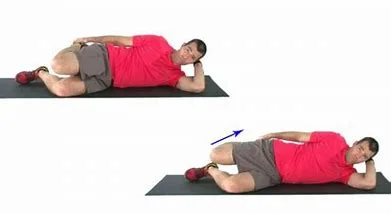
- For support, place yourself next to a wall or a piece of robust workout gear.
- Raising and lowering your heel slowly till the front of your leg feels stretched while holding onto your ankle.
- Your stomach should not slump outward, so tighten your abdominal muscles and maintain your legs close together.
- Hold for around 30 seconds.
- Repeat with a different leg.
Knee-to-chest stretch
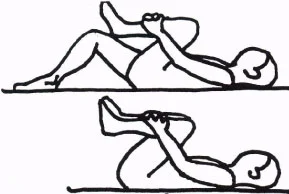
Benefits of Stretching:
- Enhanced Range of Motion and Flexibility: Consistent stretching can facilitate more comfortable and unrestricted movement.
- Decreased Pain and Stiffness in the Muscles: Stretching helps reduce pain and stiffness in the muscles, particularly after working out.
- Injury Prevention: Stretching lowers the chance of injury by preparing muscles for exercise.
- Stretching after exercise can help muscles heal and lessen DOMS, or delayed onset muscle soreness.
Calf raises
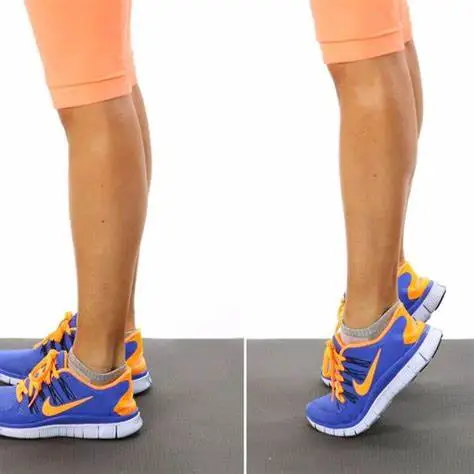
To complete the following task:
- To complete single-leg calf raises, start by bending your left knee to raise your left foot off the ground. Continue with your right leg. More emphasis is placed on the medial (inner) muscles when you turn your feet inward, and more on the lateral (outer) muscles when you turn them outward.
Hamstring curl
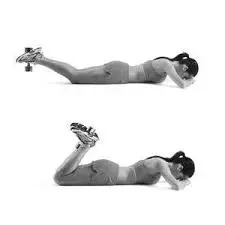
Your lower leg is raised by the muscles in your rear thighs when performing a hamstring curl. By using your hamstrings and glutes, this exercise strengthens them. Pain and injury are less likely to occur when your hamstrings are strong.
To complete the following task:
- A resistance band’s ends should be secured to a solid object.
- The hamstring muscles, which are found in the rear of the thigh, can be isolated and strengthened by performing hamstring curls. They are usually done on a leg curl machine, which requires the user to lie on their back with their legs outstretched and the foot plate beneath their calves. During the exercise, the knees are flexed, the heels are brought toward the buttocks, and the beginning posture is gradually returned.
- When you can no longer pull, stop.
- Do 12–15 repetitions.
- Lower yourself to the beginning posture while relaxing.
Leg extensions
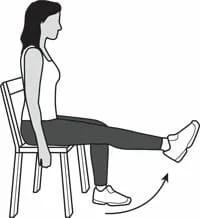
To complete this task:
- Take a seat upright in a chair.
- Contract your thigh muscles, look directly ahead, and raise one leg as high as you can without taking your buttocks off the chair.
- Lower to the beginning position after pausing.
Straight leg raises
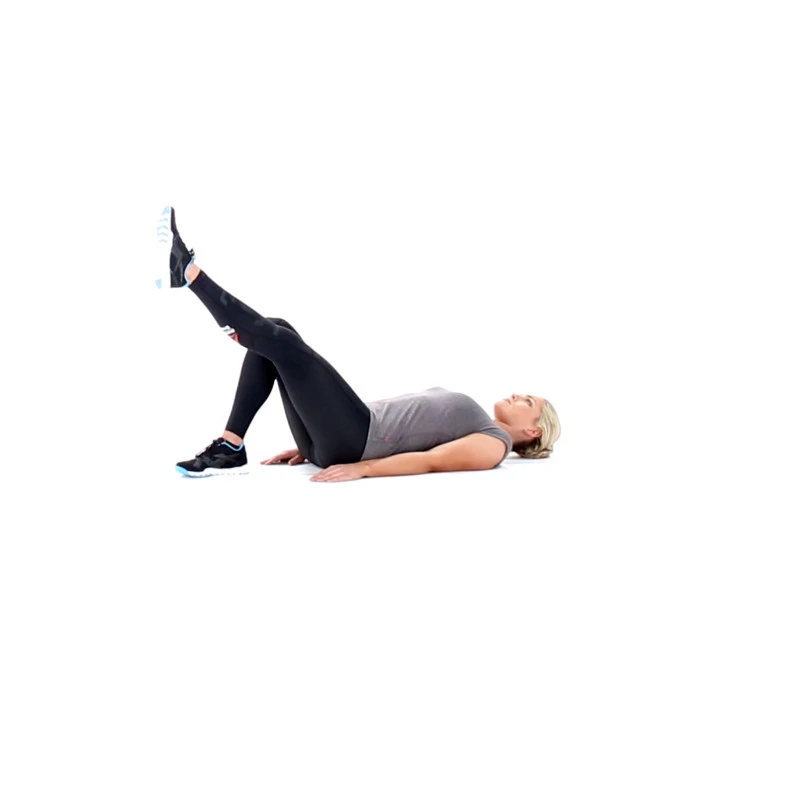
The lower cores and other abdominal muscles are used during straight leg lifts, which strengthen the core and improve stability. By improving balance and coordination, a stronger core lowers the chance of injury and facilitates daily tasks. Additionally, they can help control back pain and stop flare-ups by strengthening the lower back’s stabilizing muscles.
To complete this exercise:
- One leg must be straight on the ground, while the other one should be flexed at the knee while you are lying on your back with your foot level.
- Make sure your straight leg remains straight as you raise it toward the top of the building.
- After holding for a short while, let your leg go back to the ground. Wait three seconds.
- Repeat ten times more while relaxing position.
Side leg raises
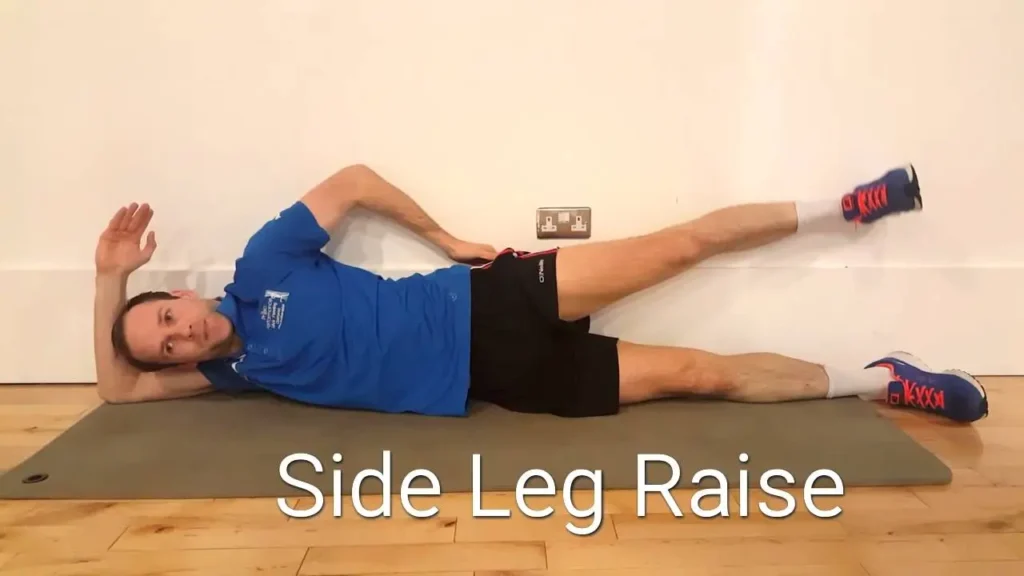
Your hip abductor muscles, situated on the outer side of your hips, allow you to easily stand, walk, and rotate your legs. Add a 5-pound ankle weight as the exercise becomes easier, and as your strength increases, work your way up to a bigger weight.
To complete this task:
- Maintain a straight body posture by extending your legs and placing your feet on top of the others.
- Your elbow can be flexed to support the top of your head, or you can put your arm parallel to the floor underneath it.
- After ten or twelve times, move to the opposite side.
Prone leg raises
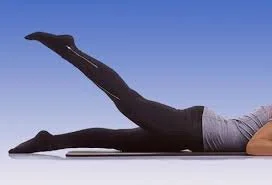
To complete this task:
- On an exercise the floor, place your hands beneath your forehead while lying face down.
- Never lift your hips off the floor. For five seconds, maintain your leg raised.
- Return your leg to the ground slowly.
- Change legs once the specified number of repetitions has been completed.
Long-Term Strategies to Reduce Knee Pain
Exercise and Physical Therapy

Strengthening supporting muscles, increasing flexibility, and decreasing stiffness are some ways that physical therapy and exercise can help manage knee pain. To help reduce pain and enhance function, physical therapists may employ methods including joint mobilization, manual treatment, and modalities like heat or cold. Physical therapy or other exercises for strengthening may be suggested by your physician, based on the particular problem that is causing your pain.
Exercises may be necessary if you are physically active or participate in sports to create proper technique throughout your activity and to rectify movement patterns that may damage your knees. It’s also essential to perform workouts that improve your balance and flexibility. Arch supports, which sometimes include shoes on one side of the heel, help reduce pressure off the side of the knee where osteoarthritis is most prevalent. Different kinds of braces may be used to support and protect the knee joint in specific situations.
Injections

Among the examples are:
Corticosteroids. Injections of corticosteroid, sometimes referred to as cortisone shots, are frequently used to relieve knee pain, especially when osteoarthritis is present. Usually, inflammation is caused by your immune system sending cells to your body to fight off infections or repair injuries. The area of your body exhibiting inflammation will receive an injection of cortisone from your healthcare practitioner. This lessens pain and swelling. A corticosteroid injection may relieve pain in the knee and has effects that usually endure for a few weeks or months.
Hyaluronic acid. Despite inconsistent study results about the effectiveness of this treatment, relief from a single or series of shots may persist up to six months. As a lubricant and possible pain reliever, hyaluronic acid injections can be a useful treatment for knee pain, especially in osteoarthritis. These injections, sometimes referred to as supplementation, are intended to replenish the knee’s natural lubricating fluid, which cushions the joint and facilitates smooth bone movement. Injections of hyaluronic acid are frequently used as a last resort when other therapies have been unsuccessful, however, some patients report significantly better function and reduced pain.
Platelet-rich plasma(PRP). Especially in cases with osteoarthritis, platelet-rich plasma (PRP) injections may be a non-surgical treatment for knee pain. To promote the body’s natural healing processes, platelets from the patient’s blood are concentrated and injected into the knee joint as part of PRP therapy.
Surgery
It’s usually not required to have surgery right away if you have an injury that might need it. Before choosing, weigh the benefits and drawbacks of both surgical reconstruction and nonsurgical rehabilitation in light of your priorities. You may have the following choices if you decide to get surgery:
- Partial knee replacement surgery. Unicondylar or unicompartmental knee replacement, another name for partial knee replacement, is the process of using an artificial implant to replace just one portion of the knee joint. When only one knee compartment—rather than the entire joint—has arthritis, this treatment may be an option.
- Total knee replacement. It is frequently done to reduce pain and increase mobility, especially in people with severe arthritis or other conditions affecting the knee.
- Osteotomy. To improve knee alignment and alleviate arthritic symptoms, this treatment involves removing bone from the thigh or shinbone. A surgical operation called an osteotomy involves cutting and realigning a bone to rectify abnormalities or enhance joint alignment. This bone-cutting technique can be used to realign, lengthen, or shorten bones; it is frequently used to treat diseases like bone abnormalities, joint misalignments, and angular deformities.
Lifestyle and home remedies
Applying lotions that include numbing agents like lidocaine or capsaicin—the ingredient that gives chili peppers their heat—to the injured knee helps some individuals feel better.
Posture and support
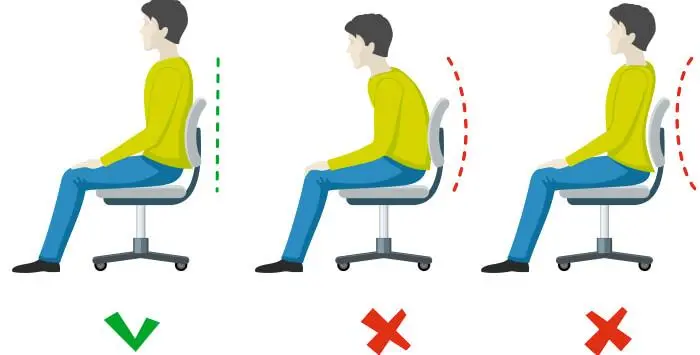
The following actions can reduce knee strain:
For added stability, think about using braces or knee supports. Avoiding couches and low seats that you “sink” into; if needed, raising your seating level with a pillow; and making sure you maintain proper sitting posture without slouching or leaning.
Weight management
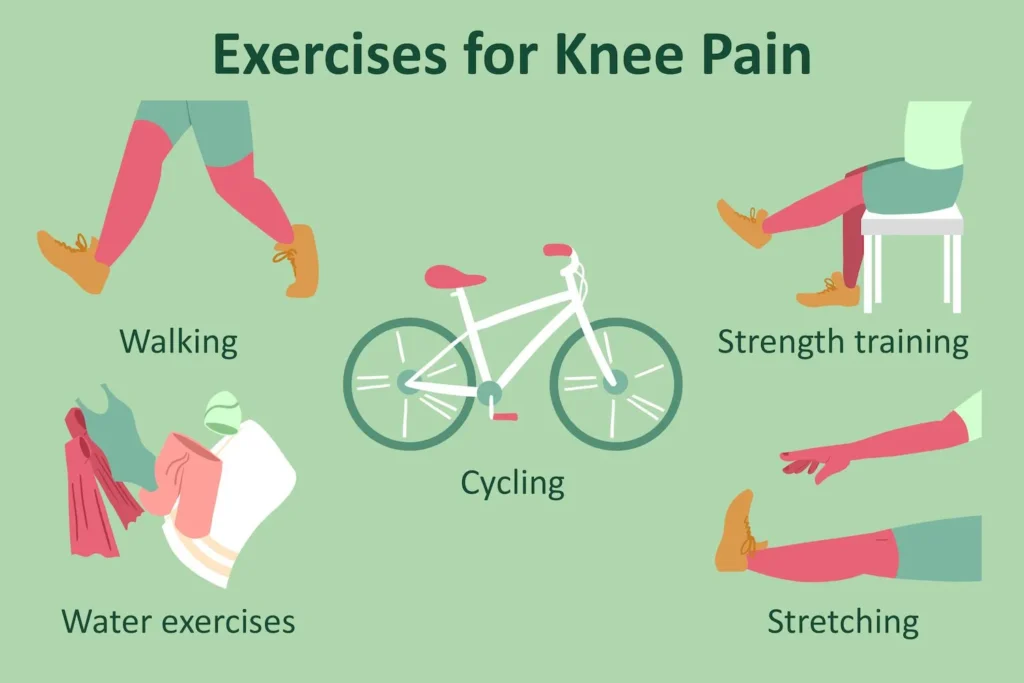
The joints have to do more work when you are carrying additional weight. Wearing too much weight causes inflammation all across the body, including the knees. The amount of weight a person needs to shed can be determined with the assistance of a physician or dietitian. They can also assist in creating a healthy nutrition plan.
Maintain a nutritious diet.
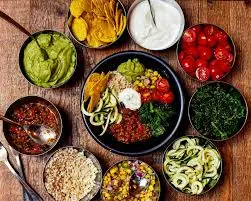
In addition to lowering the risk of cardiovascular disease and other aging-related illnesses, a diet high in fruits, vegetables, fish, nuts, and beans and low in processed foods and saturated fats may also help maintain healthy joints. According to studies, a Mediterranean diet may lower the chance of getting OA as well as the inflammation and disease progression that harm joints in those who already have it.
- Rest. For a mild injury, you might only need to rest for a day or two. A longer recuperation period is probably required for more serious injuries. To give the knee time to recover, stop doing anything that makes the pain worse. For a small injury, a day or two of rest can be sufficient, while a more serious injury might necessitate a longer rest period.
- Ice. Ice lowers inflammation and pain. To protect your skin, you can also use an ice pack covered with a small cloth.
- Heat. Applying a heat pack or hot water bottle to the troublesome area of your knee may provide you with short-term pain relief.
- Compression. This preserves knee stability and alignment while preventing fluid accumulation in injured areas. Choose a compression bandage that is self-adhesive, lightweight, and breathable.
- Elevation. Try resting in a recliner or supporting your wounded leg with pillows to minimize swelling.
- Work out. The heart’s muscles are strengthened by cardio activities, but not the joints. Cardio helps you feel stronger overall and maintain a stable weight. Walking, swimming, water aerobics, stationary cycling, and elliptical machines are all excellent options for cardiovascular exercise.
When to Consult an Orthopedic Physician About Knee Pain
Although knee pain can be relieved with home remedies, there are undoubtedly circumstances in which you should see an orthopedic professional. Think about visiting a physician if:
- There is a lot of pain.
- There is knee swelling.
- No progress has been made. A week later, nothing has changed.
- The knee is incapable of supporting weight.
- The knee buckles or locks.
- Swelling doesn’t go away: Prolonged or abrupt swelling could indicate an injury or inflammation that needs medical attention.
- There is an obvious instability or deformity: Your knee may indicate ligament or cartilage injury if it feels unstable or looks malformed.
- Your knee is tough to move: The inability to fully bend or straighten your knee may indicate a significant issue that requires medical attention.
A medical professional can assist in determining the root cause of knee pain and suggest the best course of action, which may involve injections, medicine, and physical therapy. Knee surgery may be an option if conservative treatments have been tried and failed to provide long-term relief.
Prevention Tips
Naturally, the greatest medication is always prevention. Five suggestions here for avoiding knee pain and maintaining strong, healthy knees:
- Take it easy on your knees and stay away from painful activities.
- As much as possible, keep your knee up over your heart by resting with your leg propped up on a pillow.
Some points are:
Understanding your boundaries is crucial. Strength training that emphasizes strengthening the quadriceps and hamstrings can help people cope with arthritis and other structural knee issues by reducing pain and improving their tolerance. Maintaining an active lifestyle aids in weight management and muscle growth, both of which can help shield your knees from additional harm. Non-impact aerobic activities like swimming, water aerobics, elliptical training, stationary cycling, and level-ground walking are the ideal workouts for persons with structural knee issues.
- Stretching is beneficial for the knees, whether or not you are an active person.
Straight-leg raises, hamstring curls, and step-ups are some effective knee-protective stretches. By gradually increasing their speed to their maximum level instead of starting their activity at full speed, people who dislike stretching before working out can still protect their knees. People who have knee pain from stiffness or imbalanced muscles or who live sedentary lives will find it especially beneficial.
- Healthy knees depend on wearing the right shoes.
Although strengthening the muscles surrounding the knees can be achieved by stretching and strength training. Having the right shoes is especially crucial when working out. Inappropriately supportive or poorly fitting shoes can increase knee strain, causing pain and worsening osteoarthritis. On the other hand, shoes that provide sufficient arch support, cushioning, and stability can aid in weight distribution and reduce knee joint strain.
Conclusion
Using natural home remedies to manage knee pain might be an easy and efficient approach to get better. These natural treatments for knee pain which range from Epsom salt soaks and heat therapy, to turmeric and ginger. It’s crucial to see a healthcare provider for additional assessment and treatment, though, if your knee pain continues or gets worse.
These treatments can help you manage knee pain and improve your general health when combined with a healthy lifestyle. A common occurrence is knee pain. Nonetheless, a number of over-the-counter medications and home cures can help manage symptoms while the body heals.
FAQs
How can my knee pain be relieved right away?
The “RICE” method—which stands for Rest, Ice, Compression, and Elevation—can provide instant relief from knee pain. Avoid knee-stressing activities to rest. Elevation can assist in reducing edema, compression offers support and minimizes swelling, and ice helps reduce inflammation. Temporary relief can also be obtained with topical medicines or over-the-counter pain remedies.
What is the reason behind knee pain?
Injuries, excessive use, and underlying medical disorders like arthritis are some of the causes of knee pain. Commonly occurring injuries include sprains, strains, ligament tears, and cartilage damage. Patellofemoral pain syndrome and knee pain can also result from overuse, such as that caused by repetitive activity like cycling or running.
How may future episodes of knee pain be avoided?
Focus on a mix of preventive steps and lifestyle modifications to prevent knee pain in the future. These consist of keeping a healthy weight, exercising frequently but with minimal impact, wearing appropriate footwear, and maintaining optimal posture.
Is it easy to get treatment for knee pain?
A variety of treatments can effectively manage and alleviate many types of knee pain, even though there isn’t a single “cure” for them all. Treatment for progressive diseases like osteoarthritis focuses on controlling symptoms and possibly delaying the course of the illness. In certain situations, extensive cartilage damage or other problems may require surgery, such as a knee replacement.
Why is my knee suffering so much?
Meniscus tears, tendinitis, bursitis, osteoarthritis, and ligament injuries are common causes. Self-care techniques can be used to effectively treat several moderate knee pain conditions. Knee braces and physical therapy are other options for pain relief.
Can someone with knee pain perform exercise?
Overall, exercise shouldn’t worsen your current knee pain. However, as the body adjusts to new movements, performing new exercises might occasionally result in temporary muscular soreness. This type of pain should subside rapidly, and it shouldn’t be worse than it was the morning after working out.
What fruit is best for pain in the knees?
Oranges, kiwis, pineapples, blueberries, and strawberries are a few particular examples. In addition to promoting collagen synthesis, which is essential for the integrity of joint cartilage, these fruits can help lower inflammation and fight oxidative stress.
Reference
- Knee pain and problems. (2021, October 20). Johns Hopkins Medicine. https://www.hopkinsmedicine.org/health/conditions-and-diseases/knee-pain-and-problems.
- Knee pain – Symptoms and causes. (n.d.). Mayo Clinic. https://www.mayoclinic.org/diseases-conditions/knee-pain/symptoms-causes/syc-20350849.
- Knee pain and problems. (2021b, October 20). Johns Hopkins Medicine. https://www.hopkinsmedicine.org/health/conditions-and-diseases/knee-pain-and-problems#:~:text=The%20most%20common%20causes%20of,cartilage%20tears%2C%20tendonitis%20and%20arthritis.
- Clinic, O. (2025, March 3). Home remedies for knee pain. The Orthopedic Clinic. https://orthotoc.com/home-remedies-for-knee-pain/#:~:text=Turmeric%20and%20Ginger.%20Both%20turmeric%20and%20ginger,ginger%20has%20natural%20pain%2Drelieving%20and%20antioxidant%20qualities.
- Saini, S. (2025, February 16). 9 Easy & Effective Natural Home Remedies for Knee Pain. Global Healthcare India. https://www.globalhealthcareindia.com/home-remedies-for-knee-pain/#:~:text=Add%20a%20cup%20of%20Epsom%20salt%20to,is%20caused%20by%20muscle%20strain%20or%20overuse.
- Professional, C. C. M. (2025b, March 19). Knee pain. Cleveland Clinic. https://my.clevelandclinic.org/health/symptoms/21207-knee-pain
- A guide to basic stretches. (n.d.). Mayo Clinic. https://www.mayoclinic.org/healthy-lifestyle/fitness/in-depth/stretching/art-20546848#:~:text=Stretching%20safely,stretches%20are%20right%20for%20you.
- Knee pain – Diagnosis and treatment – Mayo Clinic. (n.d.). https://www.mayoclinic.org/diseases-conditions/knee-pain/diagnosis-treatment/drc-20350855#:~:text=Therapy,and%20support%20the%20knee%20joint.

